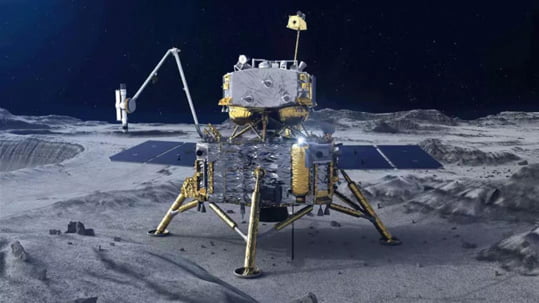
On March 9, Zhang Kejian on behalf of the “China National Space Administration” (CNSA) and Dmitry Rogozin on behalf of the Russian Roscosmos signed an inter-state cooperation agreement for the construction and operation of an “international lunar research station”: a joint base on the ground, technoscientific and not only.
With so many satellites orbiting around the Earth, and the ever-increasing strategic significance of such satellites and for military use, space has become a de facto battlefield in the intensifying inter-capitalist competition. And the moon is the closest “space continent” that needs to be conquered.
Last year, the United States announced the “Artemis program” for the colonization of the Moon by 2024… “Colonization” does not simply mean the creation of some base, but the conquest of “safe zones” on the Moon. That is, ensuring that from there, no one will be able to “target” American assets (terrestrial or space-based). Although there has been cooperation between NASA and Roscosmos on space programs since the 1990s, Washington excluded Moscow from the “Artemis program.” The agreement with Beijing is Russia’s response.
Beijing already has a well-developed space program: on November 23, 2020, it launched a robotic vehicle (Chang’e 5) to the moon, which landed on the dark side on December 1, collected nearly 2 kilograms of soil samples, and returned to Earth on December 16. This was the 5th Chinese lunar exploration mission, the first to collect and transport soil samples… And, interestingly, it was the first human space mission of this kind since 1976, when the Soviet Luna 24 performed similar work. One can imagine the technological advances from 1976 to 2020 and why the Chinese endeavor is (at this moment) the most technologically advanced, even though it has not yet achieved a human footprint on the moon.
But the space inter-capitalist competition that has already begun will not resemble at all the American-Russian one of the 1960s and 1970s. Back then, the moon itself was indifferent as a “use value,” it had symbolic significance, and the main issue was the development of intercontinental missiles (for military use); consequently, the “space programs” were their impressive and mass-consumption showcase of competition for rocket technology. Now the entire space from Earth to the moon has been colonized and is being colonized capitalistically; and some kind of “space wars,” let’s say satellite destruction or attacks from outside the atmosphere towards Earth’s surface, are not science fiction.

With this data, Beijing has great ambitions. Not only does it plan to create a land-moon “special economic zone” by 2050 (thus permanent “movements” between them), but also to add a space corridor to the “Belt and Road Initiative”. This means that it will offer collaborations and exchanges to all its allies in Asia, Africa and Latin America, in order to establish various terrestrial space stations there.
The certain thing is that when Westerners hear that “Beijing plans to… by then” they shudder. On one hand, because they have realized that the Chinese regime has the resources (people and money) to make mammoth plans a reality. On the other hand, because it achieves these goals earlier than the announced timelines.
The signing of the space cooperation agreement between Moscow and Beijing has stirred up Washington; but no one there should be surprised. Now they will be able to add to their list of rivals’ threats and the “…they will fall on our heads!!…“
